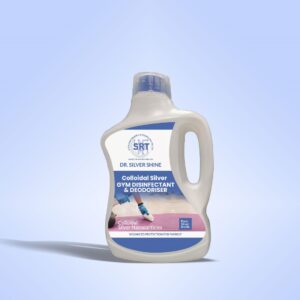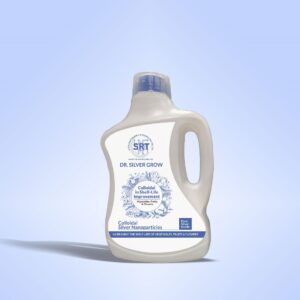Hospital Disinfectants (Colloidal Silver Nanoparticles)
Description
 Hospitals are critical environments where maintaining hygiene and preventing infections are paramount. The presence of vulnerable patients, the potential for multidrug-resistant organisms (MDROs), and the high volume of human traffic make hospitals a hotspot for infections. In this context, silver nanoparticles (AgNPs) have emerged as a powerful tool in surface disinfection, offering a broad spectrum of antimicrobial activity that is effective against bacteria, viruses, and fungi.
Hospitals are critical environments where maintaining hygiene and preventing infections are paramount. The presence of vulnerable patients, the potential for multidrug-resistant organisms (MDROs), and the high volume of human traffic make hospitals a hotspot for infections. In this context, silver nanoparticles (AgNPs) have emerged as a powerful tool in surface disinfection, offering a broad spectrum of antimicrobial activity that is effective against bacteria, viruses, and fungi.
Mechanism of Action : Silver nanoparticles exert their antimicrobial effect primarily through the release of silver ions (Ag+), which interact with microbial cell membranes, causing structural damage and disruption of vital cellular functions. These ions can penetrate bacterial cells, leading to the generation of reactive oxygen species (ROS) and interference with DNA replication, ultimately resulting in cell death. This multi-faceted mechanism makes AgNPs highly effective against a variety of pathogens, including those resistant to traditional antibiotics.
Applications in Hospital Settings
1. Operating Rooms :
- Sterility Maintenance: Operating rooms require the highest level of cleanliness to prevent post-surgical infections. AgNP-based disinfectants can be used on surgical tables, equipment, and floors to ensure a sterile environment, reducing the risk of surgical site infections (SSIs).
- Air and Surface Disinfection: Silver nanoparticles can be incorporated into air purification systems and surface coatings, providing continuous antimicrobial protection.
2. Intensive Care Units (ICUs):
- Reducing Nosocomial Infections: ICUs are particularly susceptible to nosocomial infections due to the presence of critically ill patients with weakened immune systems. Applying AgNPs to surfaces such as bed rails, monitors, and ventilators can help minimize the risk of infection transmission.
- Combatting MDROs: The rise of multidrug-resistant organisms in ICUs is a significant concern. AgNPs are effective against many of these resistant strains, providing an additional layer of protection where traditional antibiotics may fail.
3. Patient Wards and Common Areas:
- High-Touch Surfaces: Areas like patient beds, door handles, and nurse stations are frequently touched and can serve as vectors for infection. Silver nanoparticle-based disinfectants can be applied to these surfaces to maintain a low microbial load and reduce cross-contamination risks.
- Long-Lasting Protection: AgNPs can be formulated into coatings that provide long-lasting antimicrobial activity, reducing the need for frequent reapplication and ensuring continuous protection.
Advantages of AgNPs in Hospital Disinfection
- Broad-Spectrum Antimicrobial Activity: AgNPs are effective against a wide range of pathogens, including bacteria, viruses, and fungi, which is crucial in a hospital setting.
- Effectiveness Against MDROs: AgNPs can target antibiotic-resistant bacteria, offering a solution to one of the most pressing challenges in healthcare.
- Prolonged Antimicrobial Effect: The slow release of silver ions from AgNPs ensures sustained antimicrobial activity, making them ideal for areas that require continuous disinfection.
- Compatibility with Hospital Protocols: AgNPs can be integrated into existing disinfection protocols without requiring significant changes to current practices.
- Non-Toxicity to Humans: AgNPs are generally considered safe for human use at appropriate concentrations. Their use as surface disinfectants in hospitals does not pose significant health risks to patients or healthcare workers.
- Reduced Chemical Usage: AgNPs can reduce the need for harsh chemicals traditionally used in disinfection. This can be particularly beneficial in sensitive environments like neonatal units or operating theaters, where the use of toxic chemicals is a concern.
Conclusion :
Silver nanoparticles hold significant promise as a powerful and versatile tool in hospital disinfection. Their broad-spectrum antimicrobial properties, effectiveness against multidrug-resistant organisms, and ability to provide long-lasting protection make them particularly valuable in critical healthcare environments. However, the challenges associated with safety, environmental impact, and cost must be carefully managed to ensure that AgNPs can be effectively and sustainably integrated into hospital disinfection practices. As research continues to advance, silver nanoparticles are likely to play an increasingly important role in the fight against hospital-acquired infections, contributing to safer and more hygienic healthcare environments.







Reviews
There are no reviews yet.